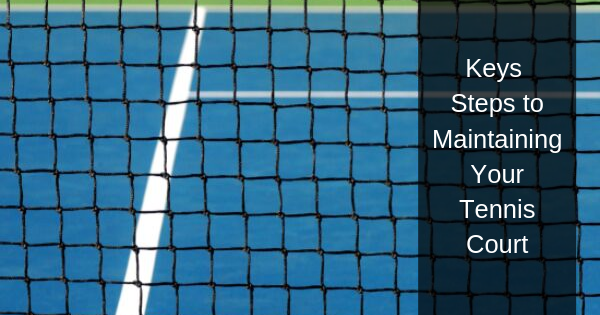
You finally have a tennis court you’re proud of and all the tennis equipment you need to get the most out of it. Not only is a tennis court an important investment, it has the potential to be a center of relaxation, recreation and rejuvenation for you and your loved ones. In order to get the most out of it, you need more than just the proper tennis equipment, you will also need to make sure it is properly maintained. Identifying the most important maintenance concerns will help you form a plan. Then you can allocate the time and resources you need. Here are some things to keep in mind.
Regular Cleaning Saves Time and Money
Your Har-Tru court should be cleaned and brushed when you material becomes uneven and marred. For a club this is everyday. For an at home court, it depends on use. This may involve targeting mold and fungus growth, particularly in shaded areas on both Ha-Tru and hard courts. Be sure to include the areas around tennis nets and benches when cleaning debris from a tennis court.
If your court has an acrylic surface, fungus and mold will not just grow on it by themselves. Acrylic surfaces are not conducive to the formation of fungi. However, other things on the surface of the court can become spawning ground for mold and fungus. If someone has spilled a drink, food or any other organic material, fungus and mold will be more than happy to set up shop. In addition, organic materials that blow, drift, or get deposited on the court by an animal will readily house mold and fungus. Fencing serves the purpose of containing the ball and providing security, but it does a poor job of keeping pesky animals out. Pressure washing may help but you may also have to re-paint the surface if it gets too fouled up. Regularity is your friend.
Water Is Not Your Friend
Water is the most destructive elements a hard court gets exposed to. Not only can water be corrosive, but it can also become the home of other materials that serve to help deteriorate your court. Water corrodes as it gets in between the particles that make up the surface of your court, and because it is a solvent, it makes short work of the bonds holding materials together. Once the particles have been separated, corrosion begins, and it can only be reversed by rebuilding.
However, water is just as dangerous when it comes to the alien materials it can bring to the surface of your court. These are then ground or rubbed into the surface of the court by the feet of the players. If some silt or mud gets brought onto the surface, every time a player steps on it, it acts like sandpaper on the surface of the court, grinding away at the surface. Furthermore, if berries, fruit, or other oil-containing organic residue is introduced onto the court, they may be rubbed into the surface during play.
The best thing to do is to remove standing water from a hard court is by pushing the water away with a foam roller. This should be done frequently to avoid larger cleaning or repair jobs later on. You will need to include water removal tools in your tennis equipment that are designed for keeping tennis courts clean. If your court has an irrigation system next to it, make sure you keep it from spraying on the court. If small pools begin to form in certain spots, get the water out. When your contractor comes to resurface, he can build these “bird baths” up before he resurfaces and paints your court.
Using these tips will help ensure your court lasts for years, looks great, and gives you and your family the good times they deserve.

